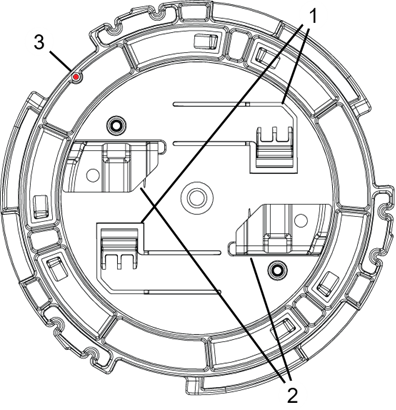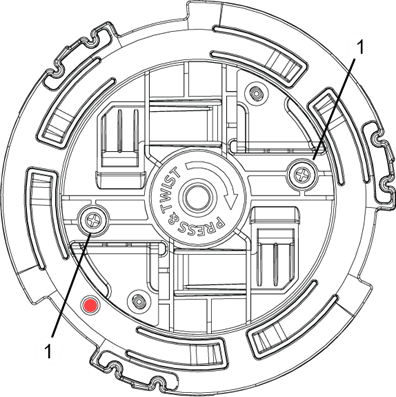Install the Access Point on a T-Bar Using ACC-BKT-AX-TBW Accessory
Before you begin
The following hardware is required for installing the ACC-BKT-AX-TBW accessory on a
T-bar:
- An indoor access point
- One ACC-BKT-AX-TBW Accessory
- Two M3.5 screws (included in the -TBW accessory)

Note
The screws come with the accessory and are partially attached in place.About this task
The following
ceiling tile protrusions are accommodated by the -TBW mounting bracket:
- If the T-bar is 0.25 inches thick, the -TBW bracket will only accommodate flush ceiling tiles
- If the T-bar is 0.1875 inches thick, the -TBW bracket will accommodate flush ceiling tiles as well as ceiling tiles with 0.062 inches protrusion
- If the T-bar is 0.125 inches thick, the -TBW bracket will accommodate flush ceiling tiles as well as ceiling tiles up to 0.125 inches protrusion
ACC-BKT-AX-TBW bracket T-bar side

| Callout | Description |
|---|---|
| 1 | -TBW bracket plastic parts |
| 2 | -TBW bracket metal parts |
| 3 | Red on the bracket to align against the access point |


